Water: Storing and Filtering
See summary parent article on short-term disaster resilience and prepping for other priorities.
Storing Water

Just thought this spoof on storing “dehydrated” water was pretty funny (see picture), although the source of the picture apparently took it seriously! In any case, the US Government recommends buying commercially purified water for storage, but they also provide instructions for bottling your own water here. They suggest rotating stored water every 6 months, but note that if you have a way of purifying water, it seems
logical that you can simply re-purify the water before you drink it. See this good site for all things related to storing water and food and this particular post for a run-down on various water storage options. This pdf facts-about-water is from an unknown source.
It is suggested that you store 1 gallon of water 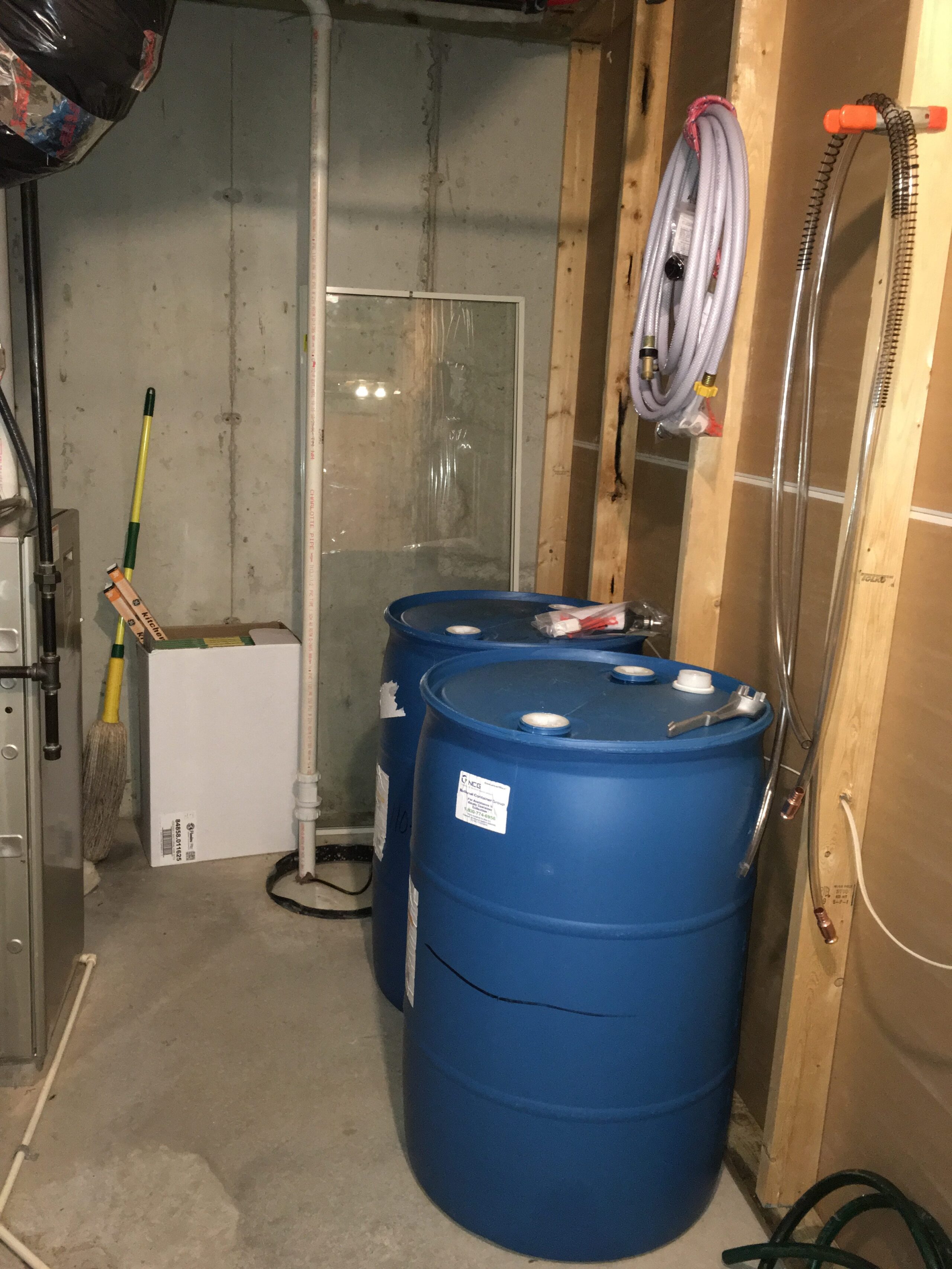
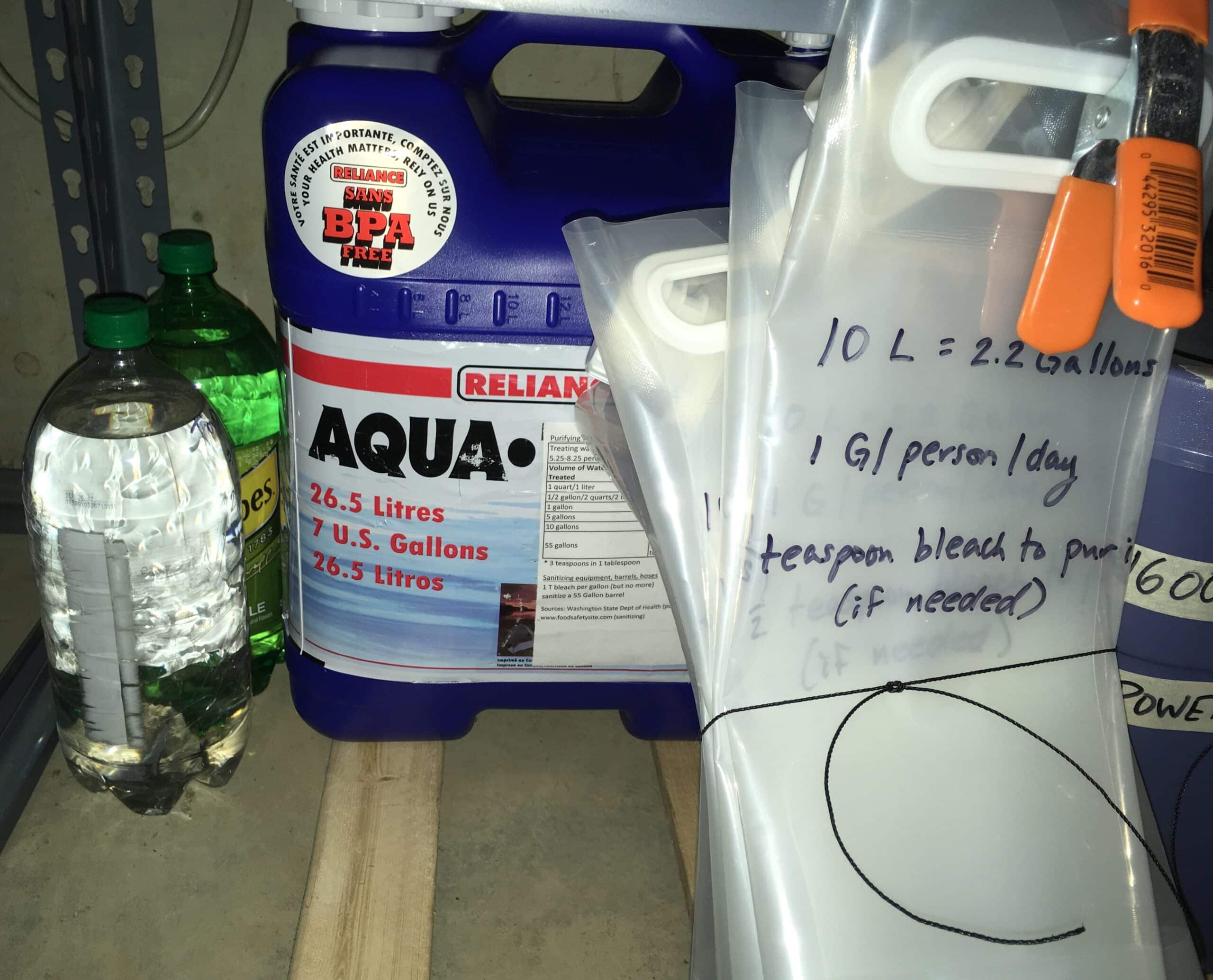
Also, don’t forget about getting the water back out again. For this purpose, I have a siphon hose with bulb to help with the flow (actually I have 2 with the idea that one can be used to siphon gas or for other purposes and still give one for potable use) and a hand pump that works with our charcoal filter. Bleach is stored behind the barrels with purification instructions taped to the side of the barrel. There’s an additional 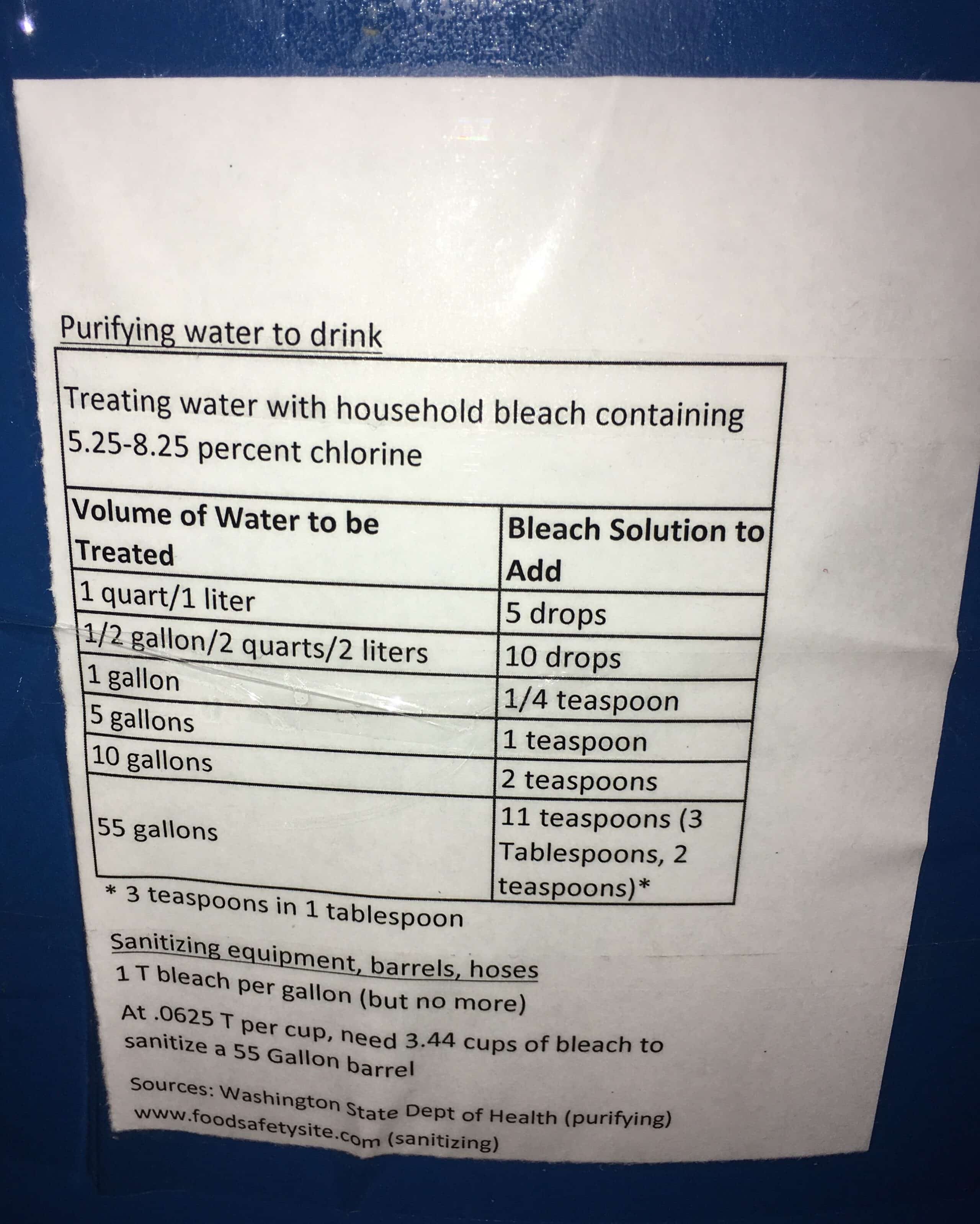
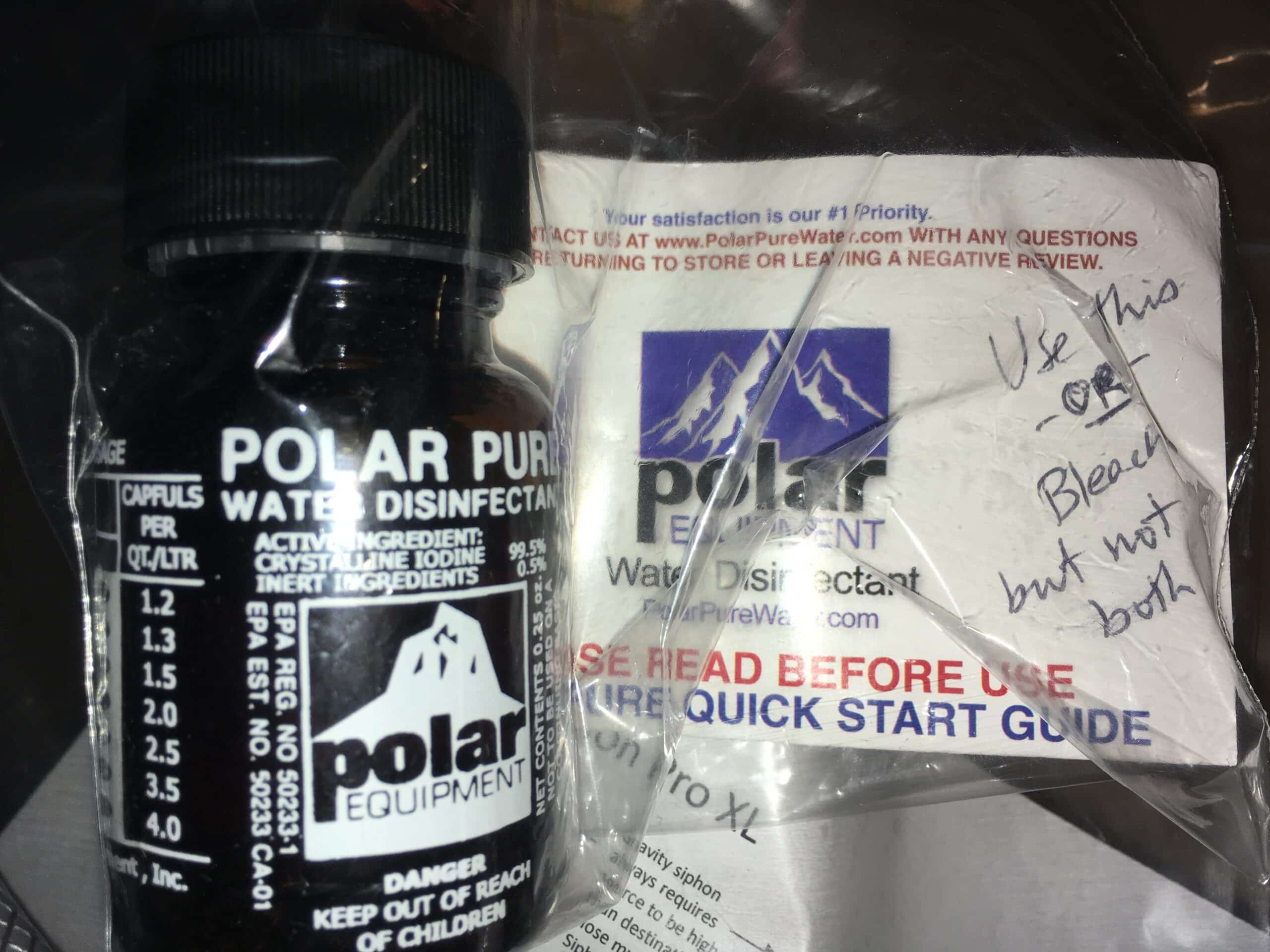
Purifying vs. Filtering
You can buy filters and purifiers. Filters get out the gunk at whatever size their filter goes down to (e.g., .2 micron filter gets out everything larger than that). Purifiers are a higher level of water cleanliness and eliminate viruses, for example.
You can pre- or post-treat water to kill viruses and make the water biologically safe (Discussion of potability; Another discussion; See, also, disinfecting water for microbiological organisms in an emergency, source = EPA).
There are five options:
- Boil the water (rolling boil with more time at higher altitudes). If you don’t have bottled water, you should boil water to make it safe. Boiling water will kill most types of disease-causing organisms that may be present. If the water is cloudy, filter it through clean cloths or allow it to settle, and draw off the clear water for boiling. Boil the water for one minute, let it cool, and store it in clean containers with covers.
- Use iodine tablets (tastes bad and may interact badly with thyroid hormones and allergies)
- Use iodine crystals (like Polar Pure)
- Use chlorine tablets or liquid (which differ slightly from household bleach). Pills come in pre-packaged foil-type units. Chlorine Dioxide tablets better than chlorine b/c latter not good on protazoa but good at dealing with viruses so you can pair iodine or chlorine with a filter. Of course, for tap water this is presumably not a concern.
- Use household bleach (just straight stuff, no additives). Bleach will kill some, but not all, types of disease-causing organisms that may be in the water. If the water is cloudy, filter it through clean cloths or allow it to settle, and draw off the clear water for disinfection. Add 1/8 teaspoon (or 8 drops) of regular, unscented, liquid household bleach for each gallon of water, stir it well and let it stand for 30 minutes before you use it. Store disinfected water in clean containers with covers. More detailed article on using bleach to purify water.
- A portable, battery-operated UV purifier like the one pictured above. Cons: bulb can break & depends on batteries. Pros: small, portable, and relatively fast. So, for example, you can remove the ice in a glass of water, dip this sucker in your water glass in a foreign country and a half-minute later be drinking pure water.
If you filter and then purify, you don’t need a killer filter b/c you will purify the water anyway. So, for example, you could use a normal coffee filter paper cone to get the gunk out and the purify by any of the methods above. Note that you could just purify (kill all the nasty bugs) but still have to drink muddy, gritty water without filtering.
Small and Portable Filter
Ceramic filter with hand pumping (see picture) with or without subsequent purifying methods (as above). Pros: portable, no power required, filters last forever because you can just clean them anytime. Cons: filters can break.
Sawyer Squeeze filters like the Sawyer MINI Water Filter is rated to 0.1 micron absolute, weighs about 2 ounces, and filters up to 100,000 gallons. It does not kill viruses or get rid of some pollutants.
Berkey Filters (make one)
First, a general intro on the Berkey. It is less portable but more through-put for large quantities of water and requires no hand-pumping or power because it is gravity fed. The Berkey has 1-4, upper chamber filters (ceramic or black) and optional lower chamber post filters for arsenic and flouride. Water goes in poured into the top and gravity feeds it through the filters to be stored in the bottom chamber where it can be poured out through the spigot. The upper chamber can turn upside down and fit in the lower for storage or travel.
There are 5 things to consider if buying a Berkey: (1) What kind of filter do you want? (Ceramic or Black); (2) How many filters do you want in the unit?; (3) Do you want optional post filters?; (4) What size? Sizes range from travel to Royal Crowne; (5) Aesthetic (Stainless steel or clearish-blue plastic?); (6) Cost.
Let’s check out each of these considerations.
- What filter do you want? 4-min advertising video on the filters generally. 2-min video on the difference between ceramic and black filters. Summary: Ceramic travels better, but black is a purifier not merely a filter. What gets filtered out (only neg = 96% of lead vs. 99% for others).
- How many filters? The more filters you have in the upper chamber the faster the water will be filtered. Also, since the filters share the filtering load, the filters have to be changed less often. For example, 2 black filters cost $107 and filter 6000 gallons. 4 black filters would cost $214 and filter 12,000 gallons. These capacities is based “on their ability to be cleaned up to 100 times using a 3M Scotch Brite Pad.” How do you know when you need a new filter? You track how often you fill it.
- Optional post filters? If you want to eliminate arsenic and fluoride, use these.
- Size. For drinking and cooking, figure 1 gallon per person per day (source). So, we calculate based on 2 g per person per day (see table below).
- Site size calculator recommends the Travel Berkey ($228) for 1-4 people, emergency use only, for drinking and cooking (but not washing needs)
- Note that for 100+ people using the water, they recommend Crown Berkey ($325)
- 10/16/12: Talking to Berkey company and getting advice. They confirmed you can safely filter water from rain, tap, ponds, lakes, and streams. # of filters determines flow-through rate (amount of water you can filter per hour). They recommended Crown Berkey with 4 filter configuration: stores 6 gallons (but filtered water can then be stored in any suitable container) and can filter 7 gallons per hour. 2 filter configuration filters 3.5 gallons per hour.
- Aesthetics: The Berkey Light is made of light-weight plastic, is see-through, and might be best for emergency use or when traveling. You can also see the water level easily. But, QUESTIONS: Is plastic version BPA free? At any time, you can convert Berkey’s to 4-filter systems by taking out the plugs and putting in new filters? How long does ceramic filter last vs. black?
- Cost. See this site, but also note there’s a scratch and dent section as well as discounts for bulk orders. 2 to 3 units: 5% Discount; 4 to 5 units: 10% Discount; 6 to 24 units: 15% Discount; 25 or more units: 20% Discount.
- A note about flow-rate. The Berkey site says, “We built on the three known factors we discovered while developing the Imperial Berkey. First, the upper container height was increased for the Crown [100+ people capacity]. This added height produced the increased pressure that was needed to push higher volumes of water through the Black Berkey purification elements. Secondly, the diameter of the Crown Berkey was increased in order to increase the number of filters to eight. This larger number of filters produced a 33% increase in filtering surface area over the Imperial.” [6 gallon storage capacity, 11″D x 31″H]
- See this post for making and operating your own Berkey-type filter.
| Gallons per person per day | 2 | ||
| Number simultaneous filters* | 2 | ||
| Filter capacity (gallons) | 6000 | ||
| Number of people | 25 | JH (4), SS (4), KM (3), L&D (4), GH (4); J&AM (5) | |
| Number households | 6 | ||
| Gallons needed per day | 50 | ||
| Days for filter change | 120 | ||
| # Filters per year | 6.08 | ||
| per person costs | per household costs | ||
| Initial costs (includes 2 Black Filters) | $325 | $13 | $54.17 |
| Make your own (extra spigot) | $127 | $5.08 | $21.17 |
| Ongoing filters per year: | $325 | $13.02 | $54.24 |
| * # of filters increases throughput volume | |||
| This throughput chart is based on numbers of filters in a Crown Berkey | |||
| Flow-rate (gallons per hour) | |||
| # simultaneous filters | Crown | Imperial or Homemade | |
| 2 | 6.5 | 5.5 | |
| 4 | 13 | 11 | |
| 6 | 16.5 | 16.5 | |
| 8 | 26 | NA | |
| Filtered storage Capacity (gallons): | 6 | 4.5 | |
| Dimensions: | 11″D x 31″H | 10″ D x 27″ H | |
Silver impregnated ceramic filters: 2 parts (bucket shaped filter that water pours into gravity-wise into bucket or dispenser). We went with Berkey Black but we could research this more.
- The silver ions kill bacteria & germs
- Silver Water Filter Company
- NASA uses, airlines uses
- Last a long time
- See CDC article
Can you use your existing home water filter for pond, lake, or rain water?
Also, see this post on harvesting rain water.
Multi-Pure MP750 Plus RO: Water goes into (1) 1 sediment filter (1st of the 3 plastic canisters); (2) 2, 5 micron pre-filters; (3) RO; (4) 5 gallon storage tank; (5) MP750SI final filter (CB6; in stainless steel canister) - Pictured to the right is a pretty elaborate and comprehensive water filter, the Multi-Pure MP750 Plus RO, priced at about $600.
- With power, you can set up a 60 psi pump to feed water into the system, shutting off the pump after the 5 gallon storage tank is filled. An RO, operating under ideal conditions (correct pressure, pH, TDS, Temperature, Iron, etc.) will take about 2 hours to fill up the tank completely. Also under those ideal conditions, you can expect about a 3:1 ratio of waste water being dumped for every 1 gallon being produced. If you plan on shutting the water pressure on/off repeatedly, you’ll need to install additional check valves to make sure the clean water in the pressurized tank does not migrate backward through the system. Also, it is unlikely that rainwater has picked up things like fluoride or nitrates – which are two of the primary reasons people go with Reverse Osmosis.
- A simpler option is to simply use the final filter cartridge (in the stainless steel casing).
Multipure CB6 Filter + Housing, under sink model This CB6 750-gallon/filter capacity ($400 or aquamini = small & portable $170) is a .5 micron solid carbon block filter (meets NSF/ANSI standards 42 [aesthetics like chlorine] and 53 [health effects, including lead, arsenic, VOCs, and more]). The filters themselves cost about $45. The water would need to be disinfected for microbiological organisms before filtering with the CB6 (see “purifying” above). An emergency hand-pump is available for about $50. It attaches to the CB6 unit and pumps water through. [One person at Multi-pure said this was a solution but another said it was not: You simply need to affix about 6’ of ¼” tubing directly to the CB6 filter cartridge using a simple fitting from Multi-Pur (MC720). Basically, all you need is the tubing, the fitting, the cartridge & an elevated water source (a bucket on top of a cabinet).] HOW MANY GALLONS PER HOUR?
Backpacking
Web-tex Surviva-Pure water filter (looks to be discontinued) has microtubes, carbon, and iodine. It is an inline unit and requires some adapters to use in a gravity feed system. These can be surprisingly difficult to find because. Typical sizes needed are as follows: 24mm for Evian-Bottles, 42mm for Sigg-Bottles, 63 mm for Nalgene-Bottles, 28 mm for Standard PET-Bottles. This kit provides all options but is no longer for sale. This one is for sale and covers some of these options. This link for 42 mm Sigg bottles.
Save
Save
Save
Save
Save
Save
Save
Save
Save
Save
Save
Save
Save
Save
Save
Save
Save
Save
Save
Save
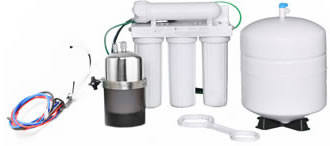

Pingback: Water | Sustainable Well-being
Pingback: Short-term resilience: Disasters | Sustainable Well-being
Pingback: Water: Harvesting Rain Water | Sustainable Well-being
Thanks for sharing this very informative post! Water storing and filtering are two important things that could help us in disaster preparedness. After the hurricane Sandy, our family really sees to it that there is enough water stored for the rainy days.
Pingback: Water: Making and Operating Your Own Berkey-Type Filter | Sustainable Well-being
Pingback: Solutions for a Functional Future | One Planet Thriving
Pingback: Short-term resilience: Disasters | One Planet Thriving
Pingback: Emergency Car Kit | One Planet Thriving